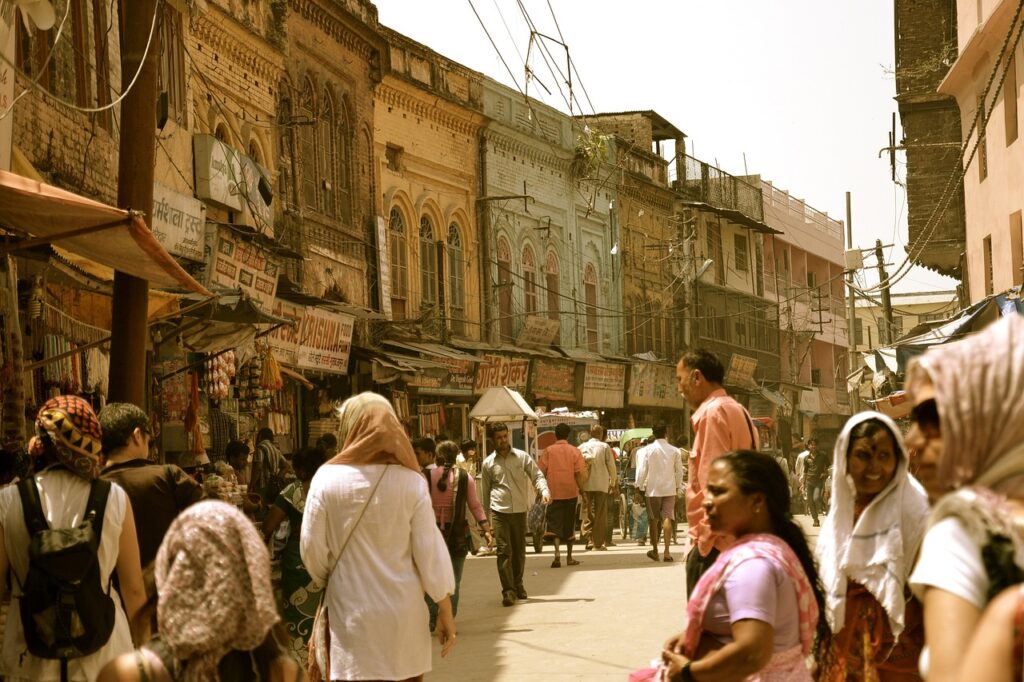4, Aug 2024
“Flavors of the Street: A Journey Through Indian Street Food”?
The story of Indian street food can be tracked back hundreds oy years to the Asian subcontinents busy marketplace and trade routes.

The story of Indian street food is a rich tapestry woven with history, culture, and regional diversity. It reflects the country’s culinary evolution and its vibrant street culture. Here’s an overview:
Origins and Historical Influences
Ancient Roots: Street food in India has ancient origins, with roots tracing back to the Vedic period. Archaeological findings suggest that early Indians enjoyed a variety of simple, portable foods. Ancient texts and art also depict people eating out and vendors selling food.
Medieval Period: During the medieval period, trade routes and invasions introduced new ingredients and cooking techniques. Persian, Mughal, and Central Asian influences contributed to the development of complex flavors and diverse dishes.
Colonial and Post-Colonial Era
British Colonial Influence: The British colonial period introduced new foods and culinary techniques to India. Street food began to adapt, incorporating elements from British cuisine while maintaining its traditional roots.
Post-Independence: After India gained independence in 1947, street food evolved to reflect the country’s growing urbanization and economic changes. The proliferation of street vendors in cities offered affordable, accessible, and diverse food options, becoming a vital part of urban life.
Regional Diversity
North India: In North India, street food is characterized by its rich, spicy flavors and includes items like Chaat, Vada Pav, and Paratha. Cities like Delhi and Mumbai are renowned for their street food culture.
South India: Southern street food is known for its use of rice, lentils, and coconut. Popular items include Dosa, Idli, and Sambar. Cities like Chennai and Bangalore are famous for their street food scenes.
East India: In East India, street food features unique flavors and ingredients. Kolkata, for example, is known for its Kathi Rolls, Puchka (Pani Puri), and various sweet treats.
West India: Western India, including cities like Mumbai and Goa, offers street foods like Pav Bhaji, Misal Pav, and Goan snacks. The region’s street food is often vibrant and rich in spices.
Cultural Significance
Social and Cultural Hub: Street food in India is not just about eating; it’s a social activity. Street food vendors often become community fixtures, and their stalls serve as gathering places for locals. Festivals, markets, and religious events also feature special street food offerings.
Innovation and Tradition: Indian street food reflects a blend of tradition and innovation. While many vendors stick to traditional recipes passed down through generations, others experiment with fusion and modern twists on classic dishes.
Modern Trends
Health and Sustainability: In recent years, there has been a growing emphasis on health and sustainability. Some vendors are focusing on using organic ingredients and offering healthier options, while others are exploring sustainable practices.
Global Popularity: Indian street food has gained international recognition, with Indian restaurants and food festivals around the world showcasing popular street food items. This global appeal highlights the unique flavors and culinary traditions of Indian street food.
Challenges and Future
Regulation and Hygiene: Street food vendors often face challenges related to regulation and hygiene. Efforts are being made to improve food safety standards and provide better infrastructure for vendors.
Cultural Preservation: As cities modernize, there is a concern about preserving traditional street food cultures. Initiatives to protect and celebrate local food traditions are helping to keep these culinary practices alive.
The story of Indian street food is a vibrant and ever-evolving narrative that reflects the country’s diversity, history, and culture. It is a testament to the ingenuity and adaptability of Indian culinary traditions, making it a beloved and integral part of India’s identity.
- 0
- By admin
